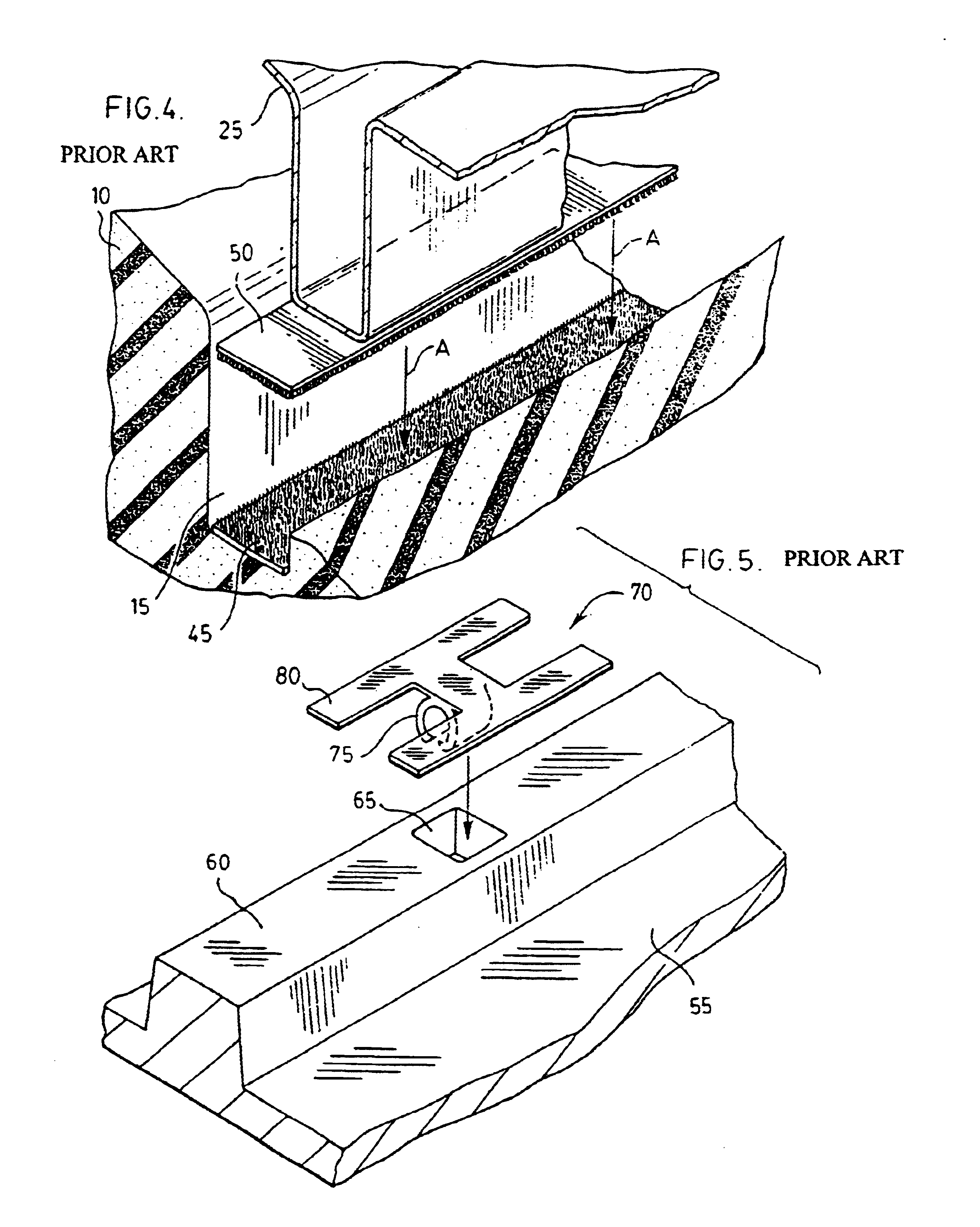Foam pad and process for production thereof
a foam pad and foam technology, applied in the field of foam pads, can solve the problems of difficult use reliably, significant capital cost required to acquire hog-ring guns, and associated labor costs, and achieve the effect of reducing inventory investment and facilitating recyclability of final products
- Summary
- Abstract
- Description
- Claims
- Application Information
AI Technical Summary
Benefits of technology
Problems solved by technology
Method used
Image
Examples
Embodiment Construction
With reference to FIGS. 1 and 2, there is illustrated a foam pad 10, typically used as a seat element in a vehicular seat component.
Typically, foam pad 10 will be molded from a foamable material such as an isocyanate based polymer system or from expanded polymer beads (e.g., polypropylene). For the purposes of the present invention, it is highly preferred that foam pad 10 be molded from an isocyanate-based polymer foam such as polyurethane foam, polyurea foam and the like.
During the molding process, it is common to mold into the surfaces of the foam of the various contours and trenches. Specifically, as shown in FIGS. 1 and 2, foam pad 10 comprises a pair of substantially parallel trenches 15 and a transfer trench 20 which interconnects trenches 15. Trenches 15, 20 are disposed in what is typically referred to as the A-surface of foam pad 10. The underside of foam pad 10 is typically referred to as the B-surface of the foam element. As will be apparent below, trenches 15 and / or 20 c...
PUM
| Property | Measurement | Unit |
|---|---|---|
| width | aaaaa | aaaaa |
| width | aaaaa | aaaaa |
| width | aaaaa | aaaaa |
Abstract
Description
Claims
Application Information
 Login to View More
Login to View More - R&D
- Intellectual Property
- Life Sciences
- Materials
- Tech Scout
- Unparalleled Data Quality
- Higher Quality Content
- 60% Fewer Hallucinations
Browse by: Latest US Patents, China's latest patents, Technical Efficacy Thesaurus, Application Domain, Technology Topic, Popular Technical Reports.
© 2025 PatSnap. All rights reserved.Legal|Privacy policy|Modern Slavery Act Transparency Statement|Sitemap|About US| Contact US: help@patsnap.com



